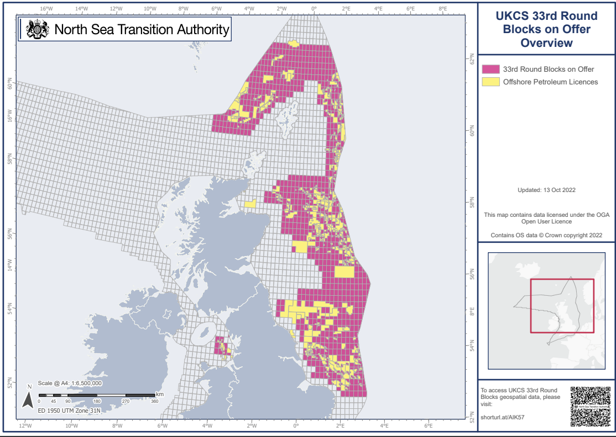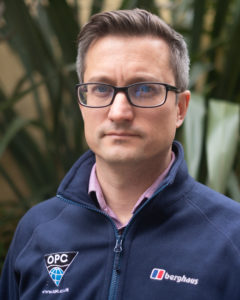The work undertaken by the OPC Technical Team is frequently complex and challenging. They provide expertise to a wide range of clients, helping them understand their assets and take important commercial decisions with confidence. We’ve asked Toby Gledhill, OPC’s resident geologist and principal geoscientist, to give us an insight into his workload last month.
October was a typical month for me – varied and challenging! I worked on three main projects but also had the opportunity to attend a PESGB field trip. Here is a quick summary to give people an insight into our work:

1. Building a Geological Model
An Atlantic Margin Field, an important mid-life asset for our client, requires a geological model that is at least partially independent of the operators and the previous operators. With expert Triassic sedimentologist, Neil Meadows, I have been re-visiting evidence on fundamental geological controls on the spatial variation in reservoir quality and how to apply the variation appropriately in a Petrel geological model. This will improve production forecasting, production optimisation and improve assessment of the capability to use it as storage facility.
2.Supervising well testing
Well operations are always the most exciting work due to the immediate live decision making required. I supervised RFT, fluid sampling, and mini-DST surveys on a live well. This involved making judgements on the quality of thin sands, and ensuring time on mini-DST stations met drilling and data quality requirements. Thanks to modern remote IT systems I was able to successfully monitor the test and communicate with the test team remotely from home. The test utilised the Halliburton RDT (see video of it in action)

3. Prospect Assessment
The 33rd UKCS licence round kicked-off in October. Alongside my OPC colleagues in reservoir engineering, I am heavily involved in supporting a key client on exploration prospect assessment, stratigraphy, static modelling, and development proposals for 3 major applications. This will take a significant portion of my time next month too.
4. PESGB field trip – carbon free energy?
I attended a PESGB field trip to Boulby Salt Mine, a rare opportunity to deepen my understanding of evaporites (dissolution makes salt rare at surface outcrop). The mine contains miles of road networks 1.2 km under the sea off Yorkshire, temperature ~40oC. These same Zechstein evaporites are a drilling hazard offshore UK but are also gas stores onshore UK and EU. Salts are one of the Earth’s best seals to gas. Zechstein and Triassic salts in the UK and Europe hold strong potential as Green Hydrogen stores (hydrogen generated from electrolysis of water, powered by renewable energy). With the UK investing in vast quantities of wind power, salt caverns could be the battery to store its energy, and released when British consumers demand it. Even speaking as a geologist who has worked within the oil and gas sector for most of my career, the potential future of ultra low carbon energy in the UK is very exciting.
Many thanks to Toby for sharing a month in the life of a geologist. If you are interested in learning more about the work undertaken by the OPC Technical team, please reach out to Toby:

Toby Gledhill
Principal Geoscientist
+44 20 7428 1111
toby.gledhill@opc.co.uk
